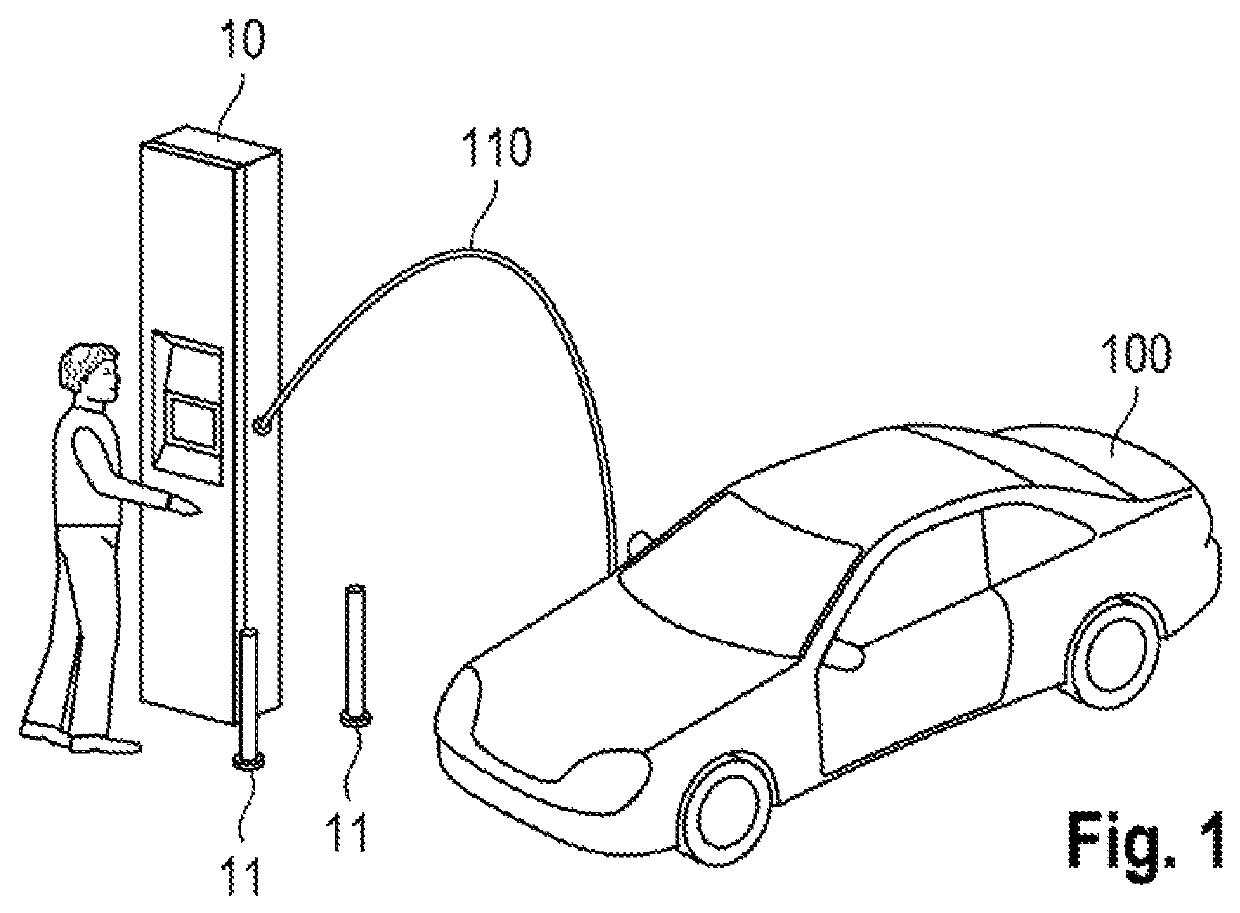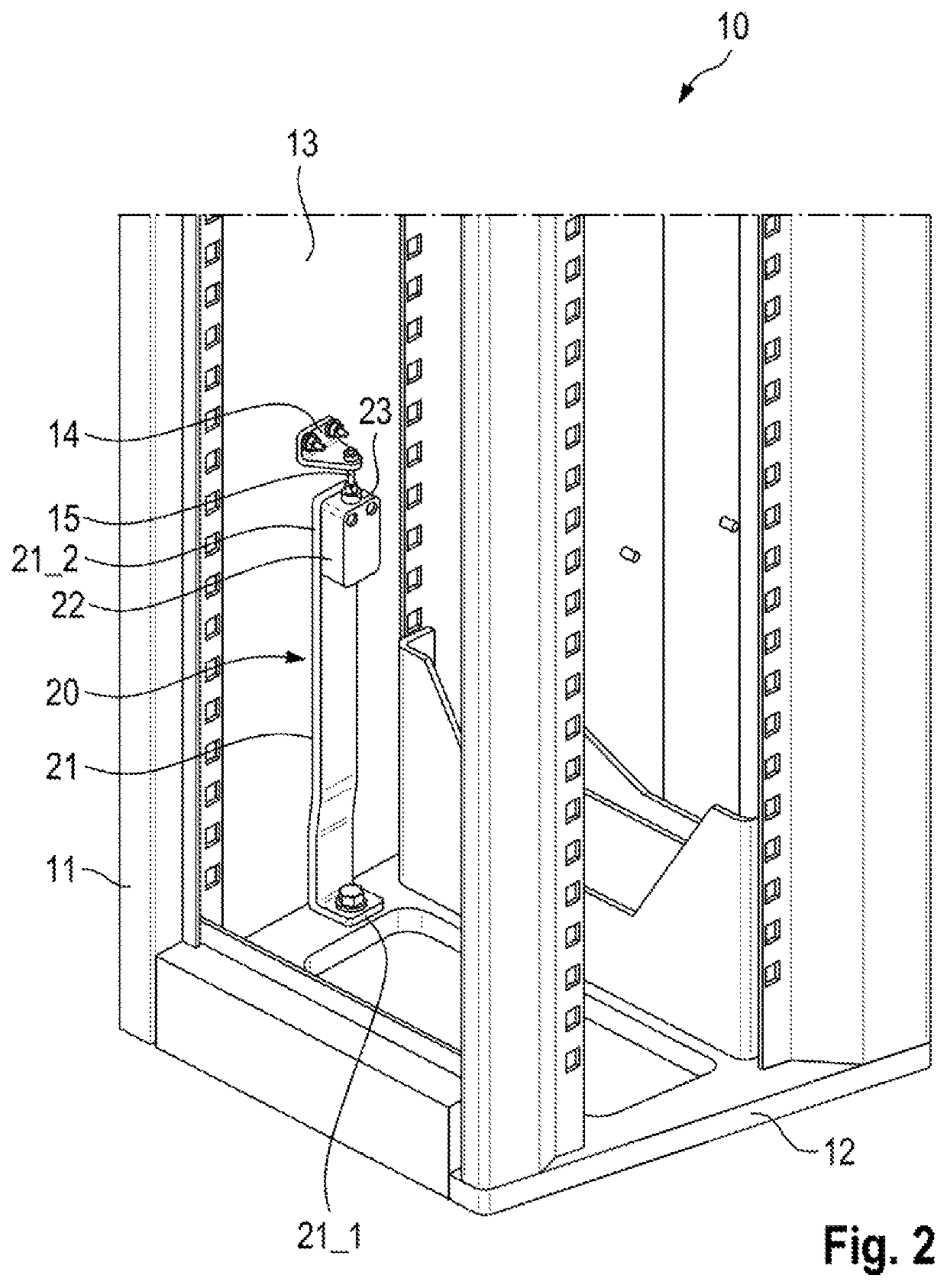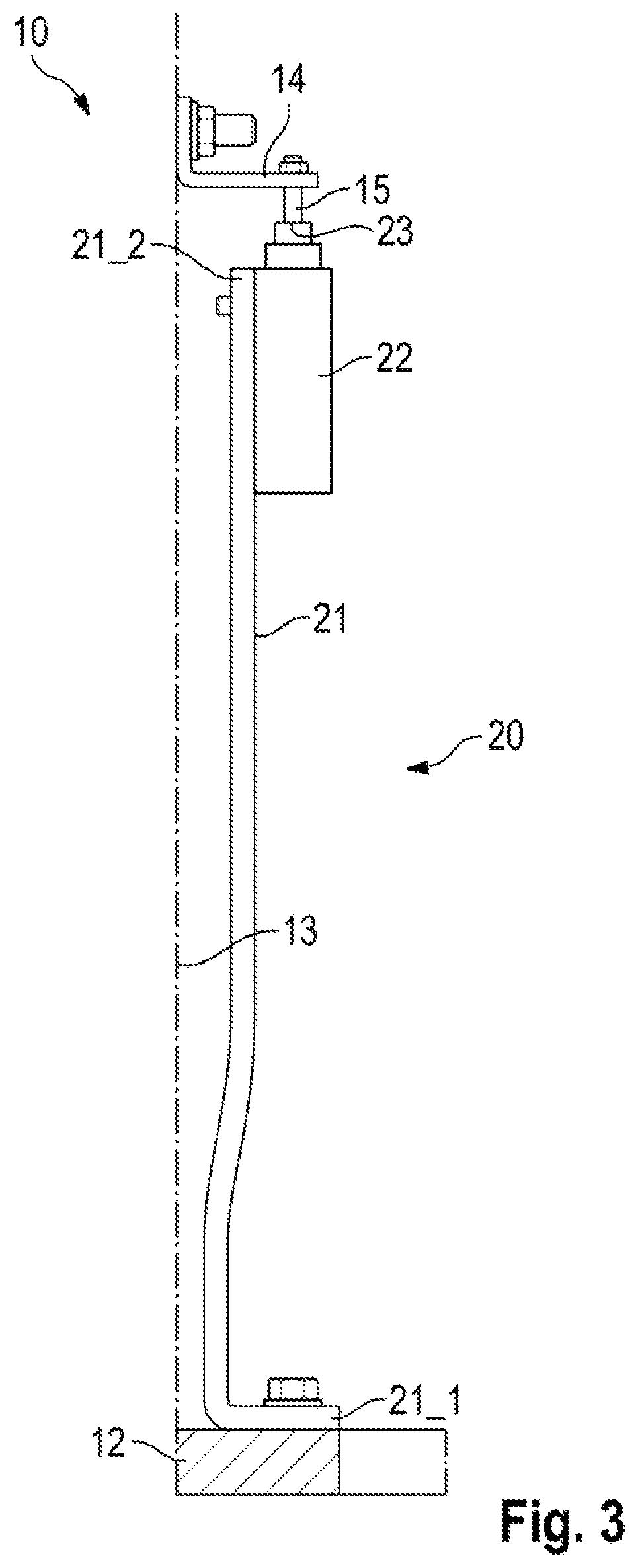Sensor and method for identifying a mechanical deformation of a housing of a charging column
a technology of mechanical deformation and sensor, which is applied in the direction of using electrical/magnetic means, vehicle maintenance, electrical/magnetic measurement arrangements, etc., can solve the problems of charging columns damaged by vehicles or other mobile units, extremely restricted charging modes, and high cost of operation, so as to reduce the potential risk
- Summary
- Abstract
- Description
- Claims
- Application Information
AI Technical Summary
Benefits of technology
Problems solved by technology
Method used
Image
Examples
Embodiment Construction
[0037]FIG. 1 shows an electric vehicle 100, which is connected to a charging column 10 by a charging cable 110. In the case of an extensive installation of charging columns 10, it should be assumed that, on the one hand, the charging columns will no longer have in each case a canopy, like in conventional filling stations and, further, a plurality of said charging columns are generally installed in charging parks, which are intended to be freely accessible for the respective vehicles to be charged. As a result, the charging columns 10, the charging cable 110 and the electric vehicle 100 are always located in the open, where they are exposed to all conceivable external influences. Since it is sought, at the same time, to enhance vehicles to enable higher charging speeds from the previous 400 V to 800 V, charging columns, in particular fast DC charging columns, which use voltages of up to 1000 V are provided. On account of the high voltage, a higher power can be transmitted at the same...
PUM
 Login to View More
Login to View More Abstract
Description
Claims
Application Information
 Login to View More
Login to View More - R&D
- Intellectual Property
- Life Sciences
- Materials
- Tech Scout
- Unparalleled Data Quality
- Higher Quality Content
- 60% Fewer Hallucinations
Browse by: Latest US Patents, China's latest patents, Technical Efficacy Thesaurus, Application Domain, Technology Topic, Popular Technical Reports.
© 2025 PatSnap. All rights reserved.Legal|Privacy policy|Modern Slavery Act Transparency Statement|Sitemap|About US| Contact US: help@patsnap.com



